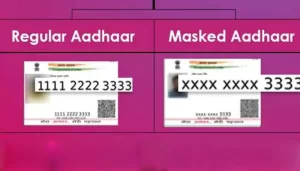The fitment of each employee in the new pay matrix is proposed to be done by multiplying his/her basic pay on the date of implementation by a factor of 2.57. The figure so arrived at is to be located in the new pay matrix, in the level that corresponds to the employee’s grade pay on the date of implementation, except in cases where the Commission has recommended a change in the existing grade pay. If the identical figure is not available in the given level, the next higher figure closest to it would be the new pay of the concerned employee. A couple of examples are detailed below to make the process amply clear.
The pay in the new pay matrix is to be fixed in the following manner: Step 1: Identify Basic Pay (Pay in the pay band plus Grade Pay) drawn by an employee as on the date of implementation. This figure is ‘A’. Step 2: Multiply ‘A’ with 2.57, round-off to the nearest rupee, and obtain result ‘B’. Step 3: The figure so arrived at, i.e., ‘B’ or the next higher figure closest to it in the Level assigned to his/her grade pay, will be the new pay in the new pay matrix. In case the value of ‘B’ is less than the starting pay of the Level, then the pay will be equal to the starting pay of that level.
Example I
i. Take the case of an employee T in GP 4200, drawing pay of ₹20,000 in PB-2. The Basic Pay is ₹24,200 (20,000+4200). If there was to be no change in T’s level the pay fixation would have been as explained in Example I above. After multiplying by 2.57, the amount fetched viz., ₹62,194 would have been located in Level 6 and T’s pay would have been fixed in Level 6 at ₹62,200. ii. However, assuming that the Commission has recommended that the post occupied by T should be placed one level higher in GP 4600. T’s basic pay would then be ₹24,600 (20000 + 4600). Multiplying this by 2.57 would fetch ₹63,222. iii. This value would have to be located in the matrix in Level 7 (the upgraded level of T). iv. In the column for Level 7 ₹63,222 lies between 62200 and 64100. Accordingly, the pay of T will be fixed in Level 7 at ₹64,100.
OR
The Commission has received numerous representations on the issue of fixation of entry pay for direct recruits at a level higher than those promoted into the same level from below. In the existing system, the entry pay for new or direct recruits takes into consideration the weightage given to qualifying service prescribed by DoPT, whereas for those reaching the grade through promotion from lower grade, the entry pay is fixed at the minimum of the pay band plus grade pay corresponding to the new grade. The entry pay therefore varies, and is different for those entering a level directly and those getting promoted into it. There have been demands for a uniform entry pay for all.
In the new pay matrix, it is proposed that direct recruits start at the minimum paycorresponding to the level to which recruitment is made, which will be the first cell of eachlevel. For example a person entering service as a direct recruit at level 3 will get a pay of ₹21,700, at level 8 of ₹47,600, at level 10 of ₹56,100 and so on.
For those who have been promoted from the previous level, the fixation of pay in thenew level will depend on the pay they were already drawing in the previous level. For instance, if a person who was drawing ₹26,000 in level 3 gets a promotion to level 4, his pay fixation will be as shown in Table 7:
Benefits of Migrating to a New System
The following benefits are expected to accrue by migrating to the new system:
a. The issues raised by various stakeholders in respect of the existing pay structure have been addressed by subsuming of grade pay and pay bands into one composite level.
b. The correction of variable spacing between adjacent grade pay and pay bands by way of rationalisation has been effected. The disparity between PB-3 and PB-4 has been setright by the process of normalisation. This will also help address the demands for upgradation of grade pay received in the Commission solely on grounds of disparity between various pay bands.
c. The fixation of revised pay has been greatly simplified in the new pay matrix and will not involve further calculations. The basic pay being drawn by any person on the date of implementation is to be multiplied by a factor of 2.57 and the figure so obtained will Report of the Seventh CPC 83 Index be matched for the closest figure in the level pertaining to his/her existing grade pay and fixed there.
d. The issue of differential entry pay has been resolved.
e. The employee can traverse both vertically within a level in the new pay matrix by way of annual progression, and horizontally across levels by way of MACP as well as on regular promotion. This will enable him/her to visualise the career path across levels and span of service.
f. The new matrix will provide greater visibility and transparency with respect to actual pay drawn as compared to the earlier system of pay scales or pay bands. It will also depict the exact amount payable to a person in relation to number of years spent in service in each level.
g. The new pay matrix is expected to be easy to administer.
h. In line with the principle of greater transparency, the new pay matrix will provide an unambiguous and complete view of the pay system in the Government of India.
i. The pay matrix can be gainfully analysed to provide crucial data on trends in pay progression, number of personnel populating each level, number of personnel entering and retiring at various levels, promotional trends of various cadres, financial outgo at various levels, and so on. Hence, it can act as a powerful tool to bring in financial management reforms.







So, commission did some mathematical invention, rather than judging arduous nature, basic qualification needed and available to fix pay.